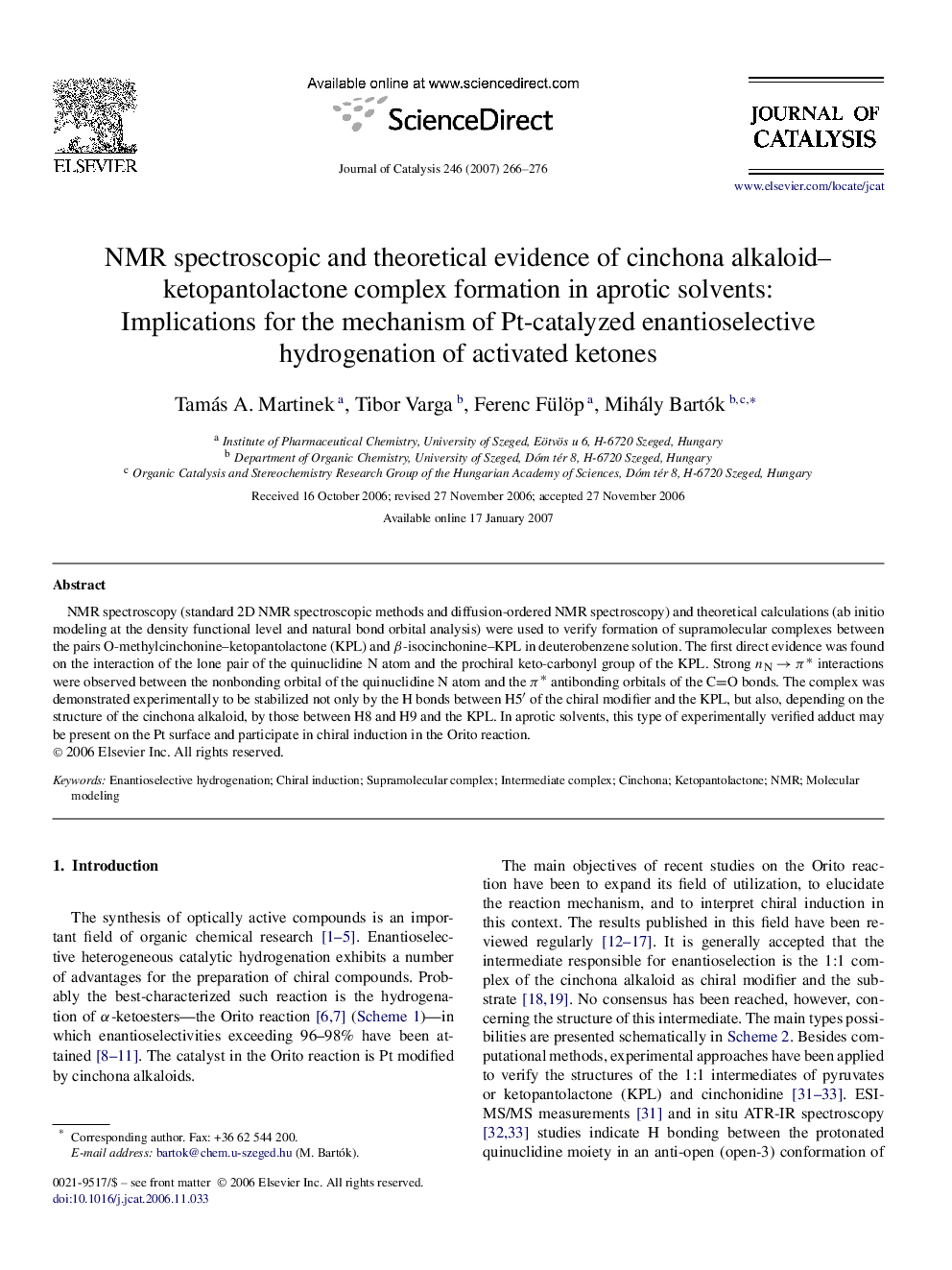| کد مقاله | کد نشریه | سال انتشار | مقاله انگلیسی | نسخه تمام متن |
|---|---|---|---|---|
| 63005 | 47667 | 2007 | 11 صفحه PDF | دانلود رایگان |

NMR spectroscopy (standard 2D NMR spectroscopic methods and diffusion-ordered NMR spectroscopy) and theoretical calculations (ab initio modeling at the density functional level and natural bond orbital analysis) were used to verify formation of supramolecular complexes between the pairs O-methylcinchonine–ketopantolactone (KPL) and β -isocinchonine–KPL in deuterobenzene solution. The first direct evidence was found on the interaction of the lone pair of the quinuclidine N atom and the prochiral keto-carbonyl group of the KPL. Strong nN→π∗nN→π∗ interactions were observed between the nonbonding orbital of the quinuclidine N atom and the π∗π∗ antibonding orbitals of the CO bonds. The complex was demonstrated experimentally to be stabilized not only by the H bonds between H5′H5′ of the chiral modifier and the KPL, but also, depending on the structure of the cinchona alkaloid, by those between H8 and H9 and the KPL. In aprotic solvents, this type of experimentally verified adduct may be present on the Pt surface and participate in chiral induction in the Orito reaction.
Journal: Journal of Catalysis - Volume 246, Issue 2, 10 March 2007, Pages 266–276